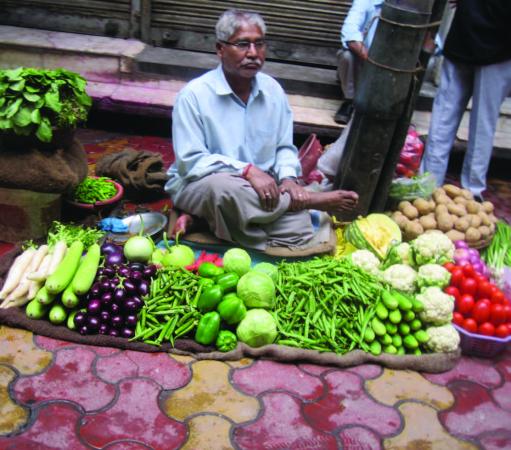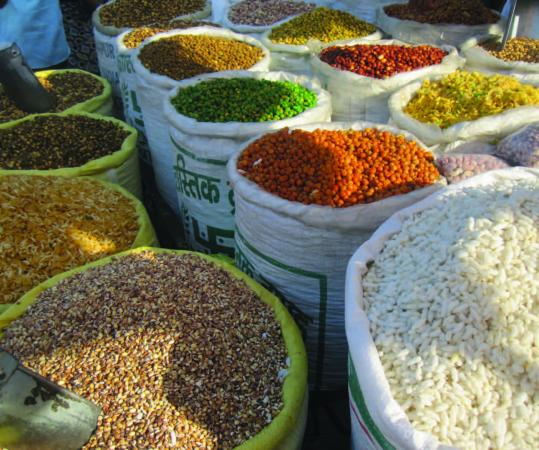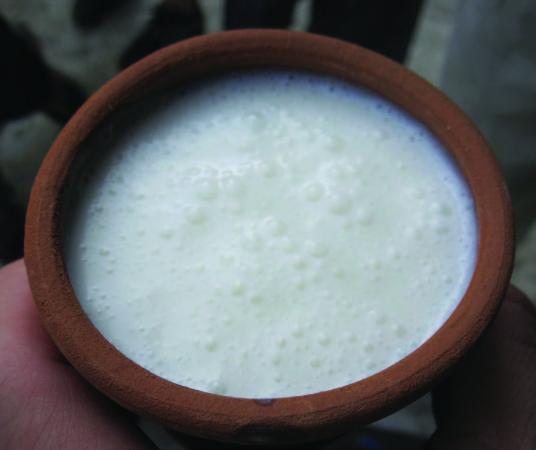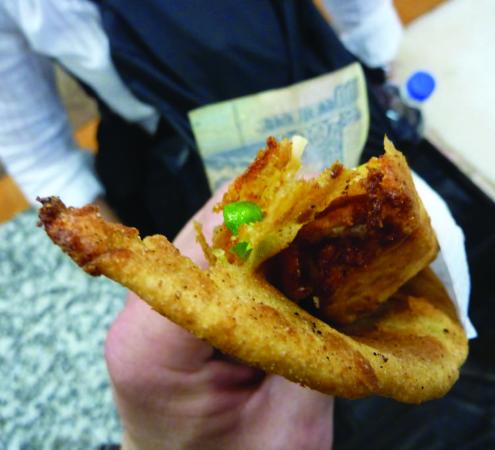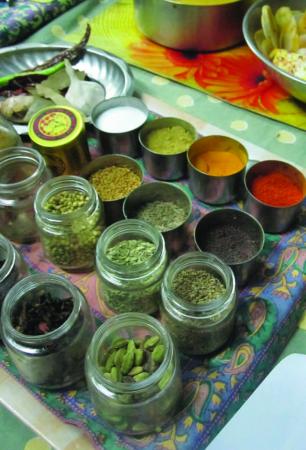Stacey Ebert has visited more than 50 countries, and found that nowhere matches up to India when it comes to catering to her as a vegetarian. She says that this is a boon to the many Jewish travelers who eat veggie out of respect to kosher laws.
By Stacey Ebert
India is a land of mystical lure filled with scented alleyways, religious mysticism and incredible characters. Snake charmers, hawkers, markets, sounds, and aromas assault your senses in the bustling metropolis and picturesque countryside. People are pleasant, service is considerate, and being a vegetarian is easy.
This veggie-friendly culture is golden for Jewish travelers. Many of us keep the laws of kashrut to a point and, while not requiring rabbinic supervision for all our food, like to stick to vegetarian options. In heavily vegetarian India, this couldn’t be easier.
In fact, some Jews who will only dine in establishments under rabbinic supervision in most of the world allow themselves to eat veggie in India, because they consider Indian vegetarians the strictest in the world, and say that their form of vegetarianism is a guarantee against non-kosher ingredients.
Food aside for a moment, India is fascinating. This old world is trying to become anew without losing the traditions at its heart. Change is happening, but as always, it’s not easy. In a land where camels and rickshaws share the streets with tourist buses and motorbikes, magic exists and travelers’ perspectives flourish. Vibrant colors, exquisite spices, beautiful ceremonies, aromatic fragrances, exotic tapestries, poverty, elegance, rubbish, tradition, and people — a contradiction in terms and a beauty all its own.
Before visiting India, I messaged a friend who lives in Delhi. Her advice: “Try the food, don’t drink the water, take acidophilus tablets ahead of time, and know that you’ll both love and despise this place.”
My husband Mat and I spent two weeks in Northern India mostly on a journey through Delhi, Agra, Bharatphur and Jaipur. Between my friend’s information, guidebooks, websites and Dame Judi Dench’s blog posts in The Best Exotic Marigold Hotel we had a sense of what to expect — but India is an experience different to any other we’ve had.
I found food heaven. Every spot we stopped had an entire menu for me (personally I don’t limit myself to vegetarian-only restaurants, and sometimes order veggie items from mainstream restaurants).
Having traveled to over 50 countries, in my opinion, India has been the easiest for vegetarianism.
Although raw vegetables are not a sensible option to travelers due to water impurities, cooked delicacies abound. Spices are exotic, aromas draw you in, and street food is ever present. Breads, potatoes, small and large dishes, and snack foods, one more delicious than the next, are in every destination excited to dance on your taste buds. Never did I have to order a meaty dish and get it made meat-free or opt for a side dish only. Here, I had options.
Like many cultures, the cuisine in India differs based on location. Southern cuisine is known to be saucier, and offers varieties of vegetarian dosas (crepes made out of rice and lentils) as both snacks and meals. Northern cuisine leans towards drier and spicier providing a colorful array of delicious delights.
On our first night we did something unusual for us: we ate in the hotel. Our tour would start tomorrow and we had just arrived on the day of the spring festival Holi, exhausted. I had aloo dhaniya, a most flavorful dish that still lingers on my tongue to this day. Potatoes cooked in a coriander and spice mixture wafted through the restaurant
and marched gallantly on our table. Colorful and warm to the touch, these were unlike any other potatoes I’ve ever tasted (and did I mention that they’re one of my favorite foods?). We’ve since made this dish many times at home savoring each morsel and remembering that first night in Delhi.
As days progressed, it became a running joke to ask which sort of potato I would have at each meal. There was aloo jeera (potato with cumin seeds), aloo paratha (fried flatbread stuffed with potato), aloo dhaniya, aloo ghobi (potato and cauliflower) and more. Mat loved the lassi. This traditional yoghurt drink served in red kiln-blasted cone shaped cups was a meal in itself. We also had paneer (homemade cottage cheese), mixed vegetable curries, vegetable pakora (similar to the Japanese tempura), samosas and a variety of rice dishes from biryianis to pilaus. The vegetable samosas were my favorite. A fried triangle that you can eat with your fingers oozes with warm potato, peas and spices and tastes as good as it smells. At market stalls, street vendors, restaurants and even the snack stand at the Bollywood movie in Jaipur you’d find me hovering over one aiming to get more in my mouth than on my feet.
Each place we stopped had something for me to try. Street vendors always had more than one vegetarian option and often there was a greater variety of choice available for me than for my meat-eating husband. The fact that he voluntarily chose to eat vegetarian most of the trip says it all. He told me: “If I’m going to try it anywhere, this is the place.” We shared meals and he was happily satisfied with the delicious array of variety in front of him. His first taste was a vegetable paratha from the narrow alleyways of the market in Chandi Chowk. Amid people washing themselves with garden hoses, clamoring cattle, shops showcasing fireworks for a nominal sum and smoke rising from various carts and stalls, we came upon a small café. Shrouded in smoke as the oil sizzled in the hot pan a man feverishly threw some shredded vegetables and potato atop ladled batter, without taking any notice of his frenzied surroundings. Within seconds he finished, wrapped and created a cone-shaped bundle of joy whose steam fogged Mat’s sunglasses as he put his face close enough to take a bite. When it cooled enough to gobble, a smile engulfed his face.
For travelers who want a taste of India with rabbinic supervision, the Chabad House in Delhi can point you in the right direction and provide food for your needs. Functioning as the heart of the Jewish community, it is located in the center of the bustling market. It doesn’t only provide food, but also Shabbat gatherings and religious services.
As part of our trip, we took a cooking class at a home in Jaipur. A husband and wife share their culinary knowledge and often have travelers join in for a meal. Here we tried our hand at making poori (Indian fried bread). A very hot pan, a small bit of batter, a slotted spoon, spattering oil and in an instant a puffed up bit of fried goodness. Magic! The lady of the house showed us a myriad of spices and explained that the word masala means mixture. We felt the roughness of the cumin seeds (jeera) in our palms and smelled the fresh coriander (dhaniya) as it hit the pan. We made a pilau rice, aloo ghobi (a potato and cauliflower spiced dish) and chola masala, my sister’s favorite. Chola masala is known in other parts of the world as chana masala. By either name, the dish is filled with chickpeas, a spice mixture, a bit of tomato paste and exceptional flavor.
Since our visit the amount of Indian food that we eat has increased exponentially. About a week after we got home we visited a nearby market and found cumin seeds, chickpea flour, sultanas, masala spiced tea, las- si and other necessary ingredients that were never before a cupboard staple. We also picked up a bag of the Lay’s Masala Magic potato chips, which we thought were only available in India. Instantly as the packet opens we are back in India where there’s flavor everywhere you turn. Aloo jeera, aloo dhaniya, and bhajis have now all been prepared back home. India was too good to leave behind, so we brought the taste of Bollywood back to Long Beach.
Stacey Ebert is a writer and event planner from New York.
She blogs at www.thegiftoftravel.wordpress.com
